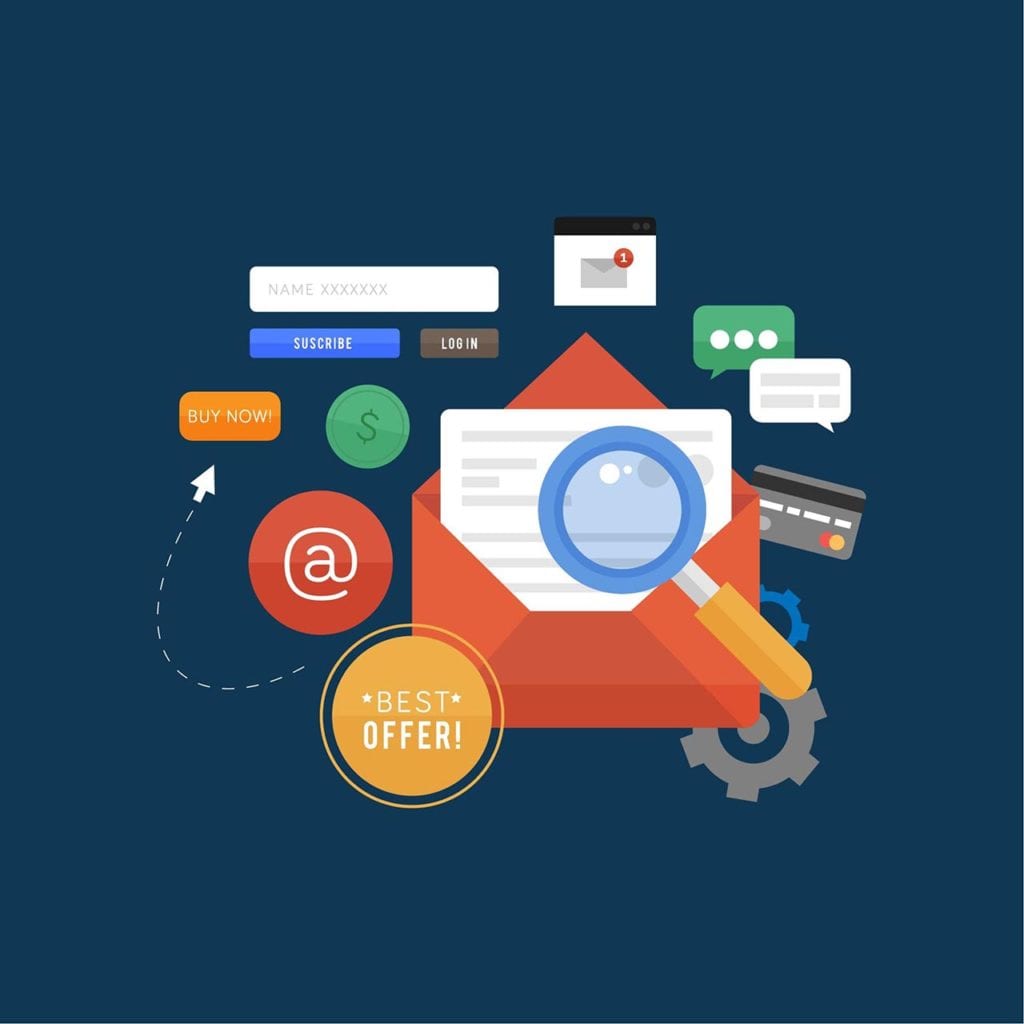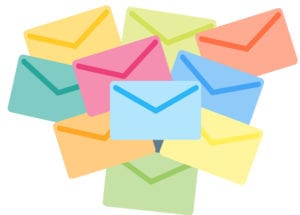
Email is often one of the most important aspects of the direct marketing mix for both business and consumer marketing. In a study just published in March 2016, 64% of companies rate email marketing as the most effective marketing channel. With this in mind, this guide addresses the vital, basic factors to consider when doing email marketing.
Have a read and let us know your experiences with email marketing.
Subject Lines
When a potential customer receives your email in their ‘in-box’ you have only a few seconds to make an impact.
In those few seconds the recipient makes a simple decision:
- Open the email then
- Open it later
- Delete it immediately
That’s why it’s extremely important to be explicit and as appealing as to the subject matter of your email as you can.
Being cryptic or mysterious may cause suspicion causing your email to be deleted immediately – we’ve all received junk mail that we’ve trashed immediately because of the subject line. Don’t let it happen to you.
It’s also worth remembering that the space most in-box’s allow for subject lines is limited, so make your subject line is succinct and get as much of your ‘hook’ into the first 30 characters as possible.
Subject Line Tips
1. Always include your company name in the “from address”, don’t disguise your identity.
2. Make sure the subject line reflects the content of the message.
3. If sending out a newsletter, include this in the subject line e.g. Your December Newsletter.
4. If possible test different subject lines for your message. The slightest change of wording can make all the difference to the open rate.
HTML tips
Your email creative may look like a web page, but that doesn’t mean it will work like one. Bear in mind these tips and techniques to give your HTML email more chance of making it through firewalls and spam filters, so it arrives still looking as it was intended to look.
Here are a few do’s and don’ts when it comes to building your email HTML.
Do's:
Dont's:
Plain text
Some recipient servers still refuse to accept HTML emails. Most email broadcasters will enable you to include a text version of your HTML.
Then your recipient will only get the version applicable to them so you don’t need to worry about repetition.
Using a text editor such as Notepad (not Word this is not a straight text editor) you can easily create a plain text file. While there is no fancy formatting included, with creative use of characters such as asterisks, hyphens and underlining you can still apply emphasis to your message.
Attachments
Some email broadcasters will not allow you to send attachments as it isn’t sensible to send a PDF or similar attachments along with every email – therefore we recommend you set up a link to your file on a server.
Including a video in your email may be tempting, but think about what will happen if multiple recipients try to view it at once.
Copy & Content Tips
1. People have short attention spans when it comes to email – Write your email so that it can be scanned quickly for the essential message and make sure you deliver your message within the first 3 inches of the message (the preview pane).
2. Give your email a strong headline.
3. Every email should be a call to action – you want your communication to continue beyond just reading the email. You need to make it clear what you expect the customer to do next.
4. Personalising your email can be effective – e.g. addressing the mail to Dear xxxx and using words like “you” and “your” as well as “I” and “we”.
5. Proof read your email.
Design & Format
Keep it simple. Don’t overuse graphics – there is a great deal of evidence to support better responses to text-based emails. Up to 40% of emails are not read because of the simple fact that the consumer has to download the images before they can see the email. There is nothing worse than receiving an email full of red x’s.
Design & Format Tips
1. Use two or three fonts at the most.
2. Use fonts that exist on the web. Common fonts like Arial, Times New Roman, and Verdana exist on most people’s computers. Choosing a font you have on your computer but is not in general use, will be substituted for something else by the recipient’s computer and the impact of your campaign could be lost.
3. Use bullets where appropriate.
4. Research other companies’ creative, especially in your field.
5. Design for your target consumer.
Links & Tracking
Last but by no means least, when creating your message think about how you intend to measure the response.
One of the best ways to look at email marketing is as part of a bigger marketing plan, a way to warm the contact up for further contact or maybe even a call.
A good example of this is to use traceable/tracking links; any good email broadcaster will have this facility.
Traceable/tracking links
An e-mail campaign was sent on behalf of a holiday company, within the message they had traceable links on various destinations such as:- Barbados, Miami, and Florida.
Once they received their campaign report from the broadcaster they could see that:
- 32 people clicked on Barbados
- 21 people clicked on Miami
- 12 people clicked on Bermuda
As they purchased email, address and telephone details, they are now in a position to send a covering letter and the relevant brochure to each of the clicks.
This could then be followed up with a telephone call at a later date.
There are many things that can be done with the information that is presented in a “Campaign report”, so it’s always a good idea to seek advice from your data provider or email broadcaster on how to best use the results.
Conclusion
There are many things that can be done with the information that is presented in a “Campaign report”, so it’s always a good idea to seek advice from your data provider or email broadcaster on how to best use the results. There are many things that can be done with the information that is presented in a “Campaign report”, so it’s always a good idea to seek advice from your data provider or email broadcaster on how to best use the results.






